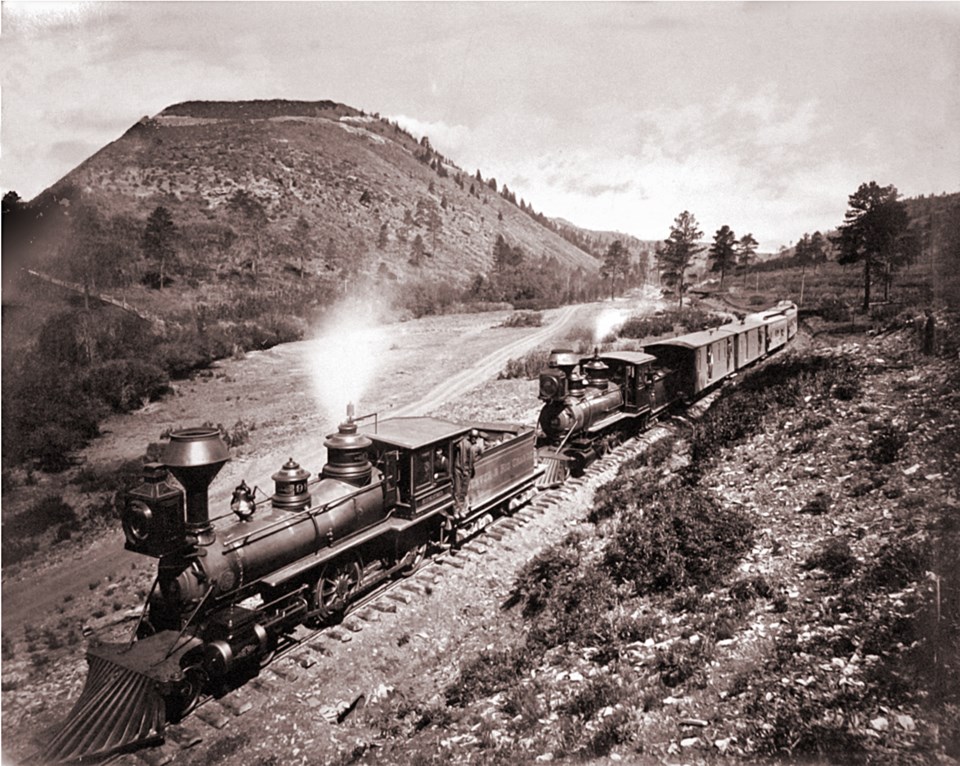Opening on January 26, the Longmont Museum is set to expose a captivating new exhibition, presenting not just one, but two distinct showcases under the title “Picturing the West.”
The museum’s primary showcase highlights landscapes by white male photographers of the 19th-century American West. Adding a fresh angle, “Reframing the West” shines a spotlight on photographers of color and female artists within the main exhibit’s framework.
The Curator of Exhibits, Jared Thompson, worked with a familiar traveling exhibition firm named art2art. Some of the showcased photos were captured in Colorado, and a few were taken by a photographer from Boulder. “Reframing the West” is an undertaking that involved thorough research led by Museum Assistant Jasmine Dinnell.
Alongside another museum assistant, Bianca King, Dinnell researched artists from the era, aiming to highlight women and people of color less represented in previous showcases. They identified preferred artists and then sought archives with accessible photographs for inclusion in the exhibition.
“A lot of the women photographers shot on Brownies, which was pretty common because the Brownie was marketed towards women because it was easy to do the whole process from home,” Dinnell said. “A lot of their photographs focus on the landscape, women, children and the land that they were living on, which was a lot different than the idealized version of nature.”
“Picturing the West,” predominantly focuses on male photographers who documented landscapes during the 1860s to the 1880s, while most of “Reframing the West” was soon after and up into the 1960s. Many of these photographic endeavors played a crucial role in shaping public perception and contributed to the preservation of these natural landscapes.
“Carleton Watkins was one of the first photographers to photograph Yosemite, and his photos were passed around in Congress,” Thompson said. “In 1864, President Lincoln signed legislation that made Yosemite a state park, that eventually became a national park in 1890.”
Jennie Ross Cobb is celebrated as the first recognized female Native American photographer and documented the Cherokee Nation during a transformative phase, navigating challenges to their tribal autonomy. Dinnell pointed out that Cobb captured images during the transition of the Tahlequah district, now Oklahoma, as it evolved into a state.
“One of the artists included is Richard Throssel, who was a quarter Cree,” Dinnell shared. “He took a lot of photos of the Crow. And they actually adopted him, allowing him to take photos of their private ceremonies and practices.”
Photos exhibited in “Picturing the West” are originals, while “Reframing the West” showcases reproductions due to the unavailability of original photos. Dinnell found only a limited number of Cobb’s photos in the Oklahoma archives.
On the other hand, Laura Webb Nichols had a substantial portfolio of around 10,000 photos, initially pursued as a hobby before becoming the founder of Rocky Mountain Studio Photography.
“There’s only one local connection, which is Laura Webb Nichols. She was born in Boulder. But then her family moved to Encampment, Wyoming, to start a ranch,” Dinnell said.
This exhibition aims to extend the historical journey, providing tangible connections to the era through authentic period cameras and photographer’s equipment. The commitment of early photographers becomes apparent considering the logistical hurdles posed by the size of cameras and the extensive equipment utilized during that era.
“To think that these people were hauling these around gives me respect for them… It’s just such a commitment to their craft,” Thompson said. “It feels a lot more intentional with what they were taking photos of versus today … You have very limited shots and very limited materials. And you have to get your composition right, you have to get your exposure. It’s all very technical.”



